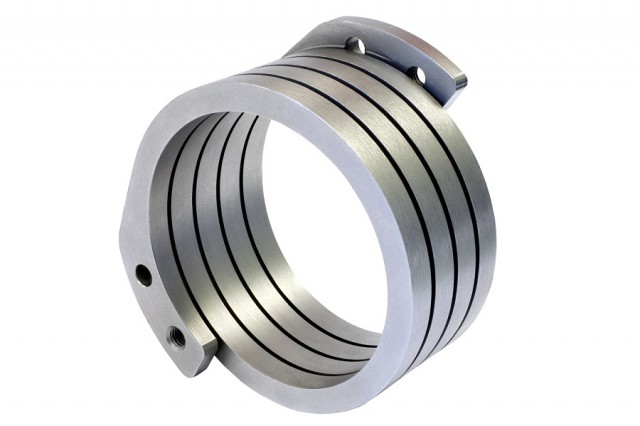

Machined Torsion Springs from ABSSAC offer a range of advantages to end users. Being machined from a single piece of solid material, they can provide very precise linear deflection rates because they eliminate virtually all residual stresses.
In a traditional, wire-wound spring, the spring rate can change over time. Because of repetition, the elastic properties deteriorate, which of course means a massive headache for the end user, who is faced with the problem that no two wound springs are exactly the same in terms of performance. Machined torsion springs, on the other hand, offer precision elasticity that a wire-wound spring cannot. To give some idea of the improvements possible, most wound torsion springs can achieve at best a linear deflection rate of around 15%, but the machined alternative can easily achieve 10% on rate and can be tuned to +/-2% for the more demanding applications.
This performance is due to a number of properties unique to machined springs, such as the fact that the coils react uniformly to give a linear rate. Equally, because each coil reacts to the same deflection, it is possible to determine how much the internal and external diameters will react.
This is far from all that these products have to offer, however. Because they are machined, it is possible to make these springs multi-start. i.e.
Double-start or even triple-start springs with two or three intertwined spring elements are available in the single piece construction. The critical performance dimensions of the spring system can therefore be predicted, which ultimately alter the performance, degree of stiffness and accuracy required. Finite Element Analysis with specific node blocking is used to verify the feasibility and performance of the machined spring. The machined nature of the springs also means that the application of a moment to the spring system is possible using a pure couple design. Some examples of this being double tangs (external internal and longitudinal), slot, splines (internal and external) and bolt circle configurations. It is also possible to resolve the moment by an integral torque restraint on the coil side.
The fact that these springs are machined from a single piece is also crucial because failures often occur in wound springs as integral features may need to be brazed, welded or attached in some other way.
For more product details here
